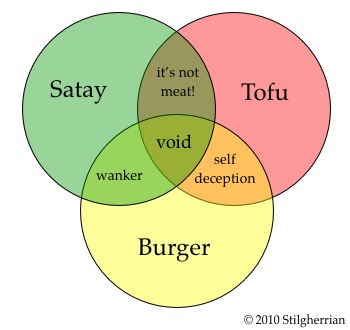Shhh! Don’t tell anyone, but my new SEKRIT podcast The 9pm Edict starts this coming Monday 22 February 2010.
Notes on Obama’s election campaign
[Last week, Australia’s Finance Minister Lindsay Tanner wrote about Government 2.0 in The government wants to blog. Later today ABC Radio wants me to talk about how Barack Obama’s presidential election campaign used social media and social networking, so I’ve been reviewing my liveblog of the presentations made by Ben Self at Media 09 and Joe Trippi at the Microsoft Politics and Technology Forum. Trippi has worked on various Democrat campaigns including as campaign manager for Howard Dean‘s 2004 unsuccessful presidential nomination campaign. Self’s company Blue State Digital managed Obama’s online fundraising, constituency-building, issue advocacy, and peer-to-peer online networking during the primaries. I figured I might as well share my notes. Enjoy.]

More than two years since Barack Obama’s presidential election campaign, the numbers are still staggering. $770 million was raised, roughly 65% of that online. There were 3.2 million individual donors, with the average donation under $100.
This is completely different from traditional political fundraising, which revolved about dinners and other events costing $2300 a ticket — the maximum unreportable donation donation allowable from a couple at that time under US electoral laws. Obama’s campaign really did reach out and mobilise millions of ordinary Americans.
Yes, millions. The progressive Democratic Party network is now 15 million people online.
Online social networking tools made all this possible, sure, but the success came through the clever application of those tools. The key word here is “personal”.
Live Blog: Media 2010
This Friday 19 February I’m liveblogging from Media 2010 in Sydney, billed as “the Annual Forecast for Digital Media Professionalsâ€.
The highlights for me are likely to be Simon Gallagher (pictured, left) from Hulu and Moeed Ahmad (pictured, right), Head of New Media at Al Jazeera, but I suspect there’ll be some surprises.
Later today I’ll review my live blog from Media 09 and post some reflections. [Update 20 February 2010: Nope, I didn’t get time for that.]
Given the changes in the media landscape it should be interesting — to say the least. What I can say already, though, is that I’m hoping Media 2010’s afternoon sessions aren’t like Media 09’s, which were mostly agencies pimping their showreels.
For now, though, just bookmark this page and pop back on the day. The event runs 9am to 5pm Sydney time, and I’ll cover as much as I can.
I’ll also issue reminders via my Twitter stream and tag everything #media_2010. Sorry about the irritating underscore. Blame Fairfax Digital.
Crikey: How I brought down the Parliament House website

I wrote about the Anonymous attacks on the Parliament House website for Crikey as well as covering it in this week’s Patch Monday podcast.
In How I brought down the Parliament House website there’s a few quotes from c0ld blood, who was one of the attack’s organisers, as well as some of the other podcast participants.
The new angle is a few comments from the Secretary of the Department of Parliamentary Services, Alan Thompson, who runs Parliament House. He is not amused, and rightly so.
Patch Monday: Tough titties: Govt sites stormed
A scoop in the Patch Monday podcast this week: an interview with c0ld blood, one of the organisers of the denial-of-service attack on the Parliament House website by Anonymous.
While Anonymous is better known for its masked protests against the Church of Scientology, some people operating under the Anonymous brand have branched out into protests against the Rudd government’s mandatory internet “filtering” program. Their attack in September 2009 brought down the Prime Minister’s website for about 10 minutes.
This time they were a lot more effective, with the target site being with with up to 7.5 million requests per second.
As well as c0ld blood, we hear from security consultant Crispin Harris, the vice-chair of Electronic Frontiers Australia Colin Jacobs, and a statement from AnonSA who distance themselves from the attacks.
You can listen below. But it’s probably better for my stats if you listen at ZDNet Australia or subscribe to the RSS feed or subscribe in iTunes.
Please, let me know what you think. We now accept audio comments too. Either Skype to “stilgherrian” or phone Sydney 02 8011 3733.
“Satay tofu burger”? No such thing!

The next time you see a café menu listing a “satay tofu burger”, please remember this Venn diagram.
Truly, there is no such thing as a “satay tofu burger”.
A burger has meat in it. Tofu is not meat, even if you cut it into little animal shapes — and that’s just self-deception anyway.
Satay is a peanut sauce for grilled or barbecued meat. If it’s not meat, it should not have satay sauce on it. End of story.
And even if you were using meat, a satay burger? What a wanker!

